Laboratory
Applied Physics Labs
-
Theoretical Materials Science Area
Diño Group

We conduct education and theoretical researches in condensed matter physics. The research here focuses on the properties of surfaces and interfaces, and other systems in the nanoscale regime, with a possible further extension to more complex systems, e.g., biological processes, and supported by cutting-edge experimental techniques.
-
Nano Physics Area
Sugawara - Li Group
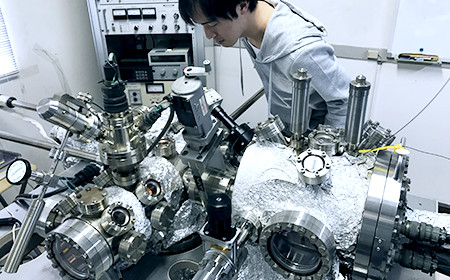
Our research focuses on novel surface and interface physics leading to future development of nanoscience and nanotechnology employing advanced nanoprobe technology such as non-contact atomic force microscope. It covers a broad range of subjects including atom/molecule manipulation, nano-phase materials, surface nano-magnetism, and solid-liquid interface physics.
-
Nano Material Area
Kobayashi Group
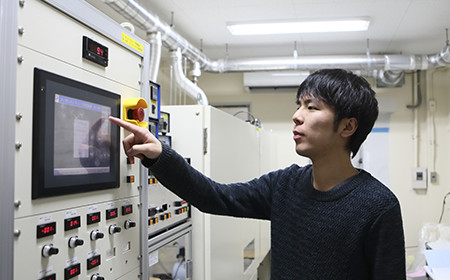
Target of our research is precise structure control and functionalization of various low-dimensional nanomaterials, such as carbon nanotube and few layer graphene. The nanomaterials exhibit unique physical and chemical properties completely different from "bulk" materials and engineering to manipulate the nanomaterials will be evolved into key technology for future nanodevices.
-
Nanophotonics Area
Fujita Group
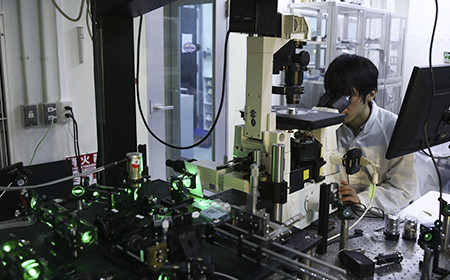
We develop advanced photonics technologies for microscopic sensing and imaging, such as super-resolution, Raman, IR/NIR/DUV imaging and spectroscopy, optical fabrication and manipulation. Our research often involves interdisciplinary and international collaborations with scientists on mathematics, chemistry, biology, and medicine. The developed technologies are applied to diverse research fields and provide new knowledge that creates new research fields. We also deliver our research output to industries for the scientific contribution to society.
-
Nano-bioengineering Area
Tamiya Group
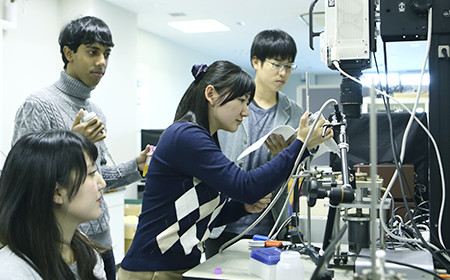
We are promoting advanced research on photophysical and photochemical processes characteristic of interactions between intense laser beam and organic materials in view of molecular science. We have been developing and utilizing various time resolved micro-spectroscopic and ?imaging methods and laser nano-manipulation and ?fabrication techniques, and now extending their applications into material processing and bio-engineering.
-
Nanospectroscopy Area
Verma Group
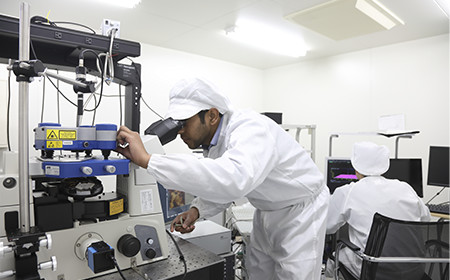
The primary research interest of the NanoSpectroscopy (NaSpec) research group is to utilize spectroscopic techniques at nanoscale to study light-matter interaction. Apart from studying the basic science at nanoscales, one of the interesting applications is to achieve a nanometric spatial resolution in optical imaging. This is done by combining plasmonic and near-field effects to Raman and photoluminescence spectroscopy, which allows one to "see" nanomaterials through visible light.
-
Nano-Biophotonics Area
Inouye - Ishitobi Group
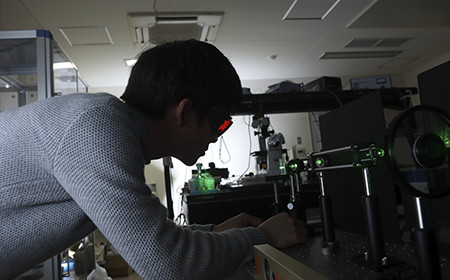
We carry out research on nano-biophotonics, a new research field that spans the fields of nanotechnology, biology and photonics. We develop techniques to observe living cells and biomolecules with ultra-high spatial-resolution and sensitivity by utilizing emerging nanotechnology such as scanning probe techniques and nonlinear photonics. Nanometric analysis of DNA, molecular imaging and ultra-high sensitive molecular detection are performed by using surface plasmon resonance. We are also interested in observation of intra- and intercellular communication and nanometric sensing of cell membrane activity by using nonlinear spectroscopy.
-
Nano-Electronics Area
Takahara Group
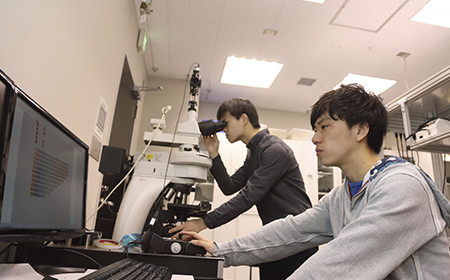
The primary research interest of our research group is nanoplasmonics and thermal radiation control. We study electromagnetic (EM) field in metallic nanostructures with wide spectral range from THz to visible and apply to new photonic devices. Our research themes cover from theory to application as follows: formation of nano-optical beam beyond diffraction limit, novel optical effect such as superfocusing and negative refraction, nano-optical circuits using plasmonic waveguide and efficient thermal radiation emitter by microcavity array.
Cooperative Labs
-
Department of Advanced Electron Devices
Sekitani - Sudo Lab, Institute of Scientific and Industrial Research
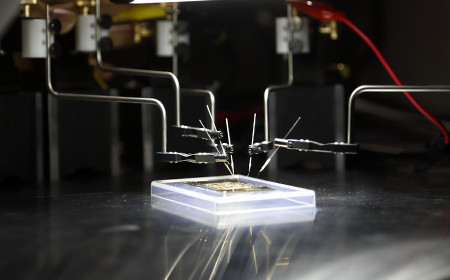
The Department of Advanced Electron Devices is engaged in study of multi-scale surface/interface structures of materials for development of novel devices that integrate the quantum mechanical features of semiconductors and molecular functions of biomolecules. We are also studying structuredependent properties of nanoscale devices.